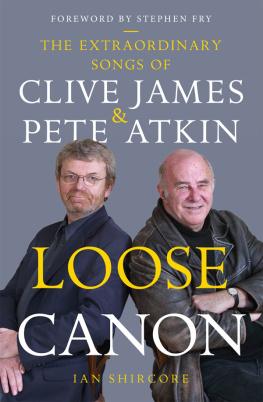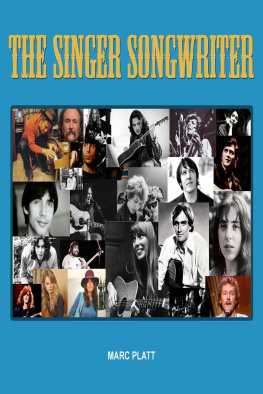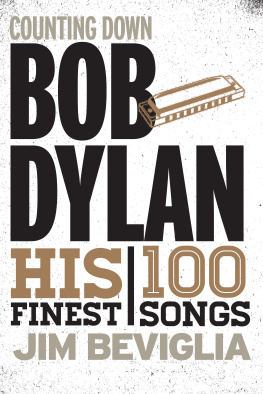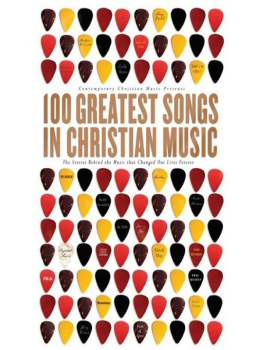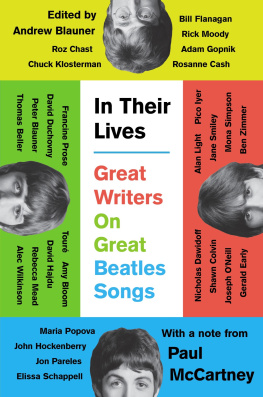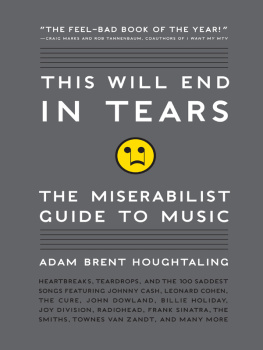


Text copyright 2019 by Indre Viskontas.
All rights reserved. No part of this book may be reproduced in any form without written permission from the publisher.
Library of Congress Cataloging-in-Publication Data available.
ISBN: 978-1-4521-7192-0 (hc)
ISBN: 978-1-4521-7227-9 (epub, mobi)
Design by Vanessa Dina
Chronicle Books LLC
680 Second Street
San Francisco, California 94107
www.chroniclebooks.com

INTRODUCTION
When I tell people Im an opera singer, they are surprised to meet a modern-day unicorn: mysterious, rare, and, lets face it, pretty archaic. Who in their right mind would devote all that time to training an operatic voice when the art form is irrelevant for most people? I can understand this reaction.
But it breaks my heart when the now duly impressed person tells me that they love music but know nothing about it. They ask if their favorite singerAdele, Bono, Bob Dylanhas a good voice. They seem ashamed of their musical taste, doubting that the music they enjoy is objectively great. Music has become caged in a caste system where even the most passionate admirers question their ability to distinguish nobility from commoners. And the performance of music has been ripped from the clutches of amateurs and reserved for the privileged class of professionals.
How did we get here? Music has always been for the masses. Even opera, whose first audiences played cards, smoked, drank, and conversed loudly throughout the show, challenged the singers to capture their attention with emotion and vocal acrobatics. These humble beginnings are a far cry from the elitist reputation opera now enjoys. Today, many people avoid it altogether, embarrassed because they just dont find the music moving.
Why do I find opera sublime while others find it boring? As both a singer and a cognitive neuroscientist, I like to combine art and science to help answer this and other questions.
Many of us think music exists in the etherwhile it defies definition, we know it when we hear it. But the truth is that we only hear it when we know it. Music isnt music until our minds make it so. Sound can be noise in one context but music in another.
Like many aspects of our personalities, we can thank our parents and our raging teenage hormones for much of our musical tastes. Two forces that shape those tastes are early exposure, when we first develop a relationship with sound, and the roller-coaster emotional ride of adolescence.
But no matter where you came from and where that ride ultimately took you, music has almost certainly left its indelible mark. Whether you have perfect pitch or cant hold a tune, whether you have B-sides that you cant let go of or guilty pleasure music reserved for road trips, music has shaped your mind. And neuroscience can show you how.
Humans are bizarre creatures: We value many things that dont ensure our survival or propagate our genes. Perhaps then its not so surprising that we spend our money and time listening to and creating meaningful sounds. But for curious extraterrestrial visitors, our love affair with meaningful sound would be baffling.
Music is essential to so many of our activities: watching movies, shopping, working out, eating out, cheering on sports teams, commuting to work. Music has the power to connect people, to change brains, to incite violence and tame beasts, to give us energy or heal our pain. But its our minds that turn noise into this panacea.
Each way of consuming or creating music has a unique neural signature and leads to a unique subjective experience. Music affects us in so many different ways that, when they are all taken together, few brain regions are left untouched. Thats why music can be a lifeline in the face of devastating brain conditions, be it Alzheimers disease or a traumatic brain injury.
In this guide, well first find out what music actually is and how it works. Then well explore how it can help or heal our minds and bodies. Finally, well turn to how music can change society. This book will show you just how ethereal and magical music is, that there is no one right way to listen or play, and that extracting meaning from sound is one of the greatest gifts that natural selection has given us.
PART 1
HOW DO OUR BRAINS TURN SOUND INTO MUSIC?
WHAT IS MUSIC?
You cant touch musicit exists only at the moment it is being apprehendedand yet it can profoundly alter how we view the world and our place in it.
DAVID BYRNE,
HOW MUSIC WORKS
Music isnt in sound waves. Its not in your ears. Its not on the page.
Its in your brain.
Sound can be noise in one context and music in another. The difference? How you listen and how your brain interprets the signal: Is it random noise, or is there a meaningful pattern?
Just by repeating a spoken phrase over and over, you can turn it into song. Try it. Or check out Diana Deutschs Speech-to-Song Illusion (http://deutsch.ucsd.edu/) in which the spoken phrase sometimes behave so strangely turns into music right before your ears.
Repetition is the one feature of music that is almost universal, ubiquitous across cultures and genres, except in twentieth-century art music (contemporary classical), which explicitly avoids it. Which is why this new music can be very hard to listen to and why, when an orchestra programs too much of it in a season, they quickly hear complaints from their donors.
Why repetition? Because our brains are tuned to detect change, not constancy. When something repeats, we ignore it. But if its slightly varied, we keep listening because we detect something worth processing. We begin to find new meaning embedded in the sound itself. Repetition gives noise a recognizable structure. Variations in repetition create meaning. And sound + structure + meaning = music. Voil!
Pattern repetition is how we learn the grammar of music, and that structure distinguishes music from random noise. Some structural elements are common across many types of music, like a move from dissonance (tension) to consonance (release). Others define specific genres, like the repeating bassline groove in most pop songs. But most pieces dont settle for pure repetition. They include variations on themes, which keep our interest and reveal ever deeper layers of truth.
Equally important in the definition of music is the context in which we hear sound. Ever wonder why audiophiles spend more time and money setting up their home stereo than their bedroom? Where we hear music can influence how our brains respond to it.
In the concert hall, we sit still and listen carefully. On the subway platform, we pretend to ignore a busking musician, burying our heads in our phones. At the gym, we fill our ears with beats, tuning out the noise of elliptical machines and grunting weight lifters.
Even silence, in the right context, can be profoundly musical. The eminent experimental composer John Cage wrote a piece called 433 which can be played on any combination of instruments. All the performers need to do is





